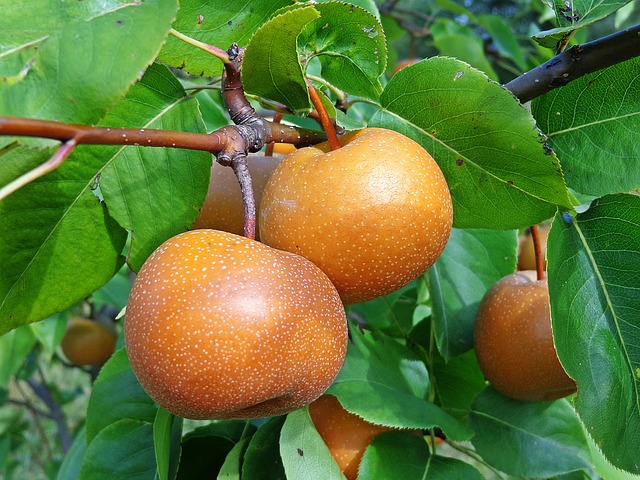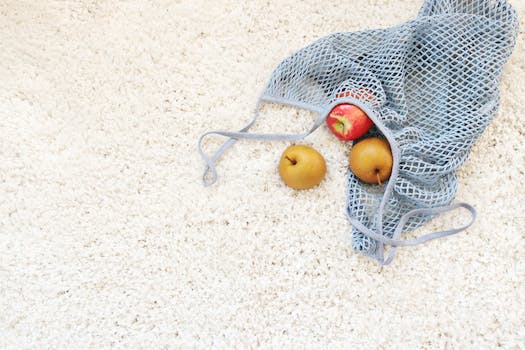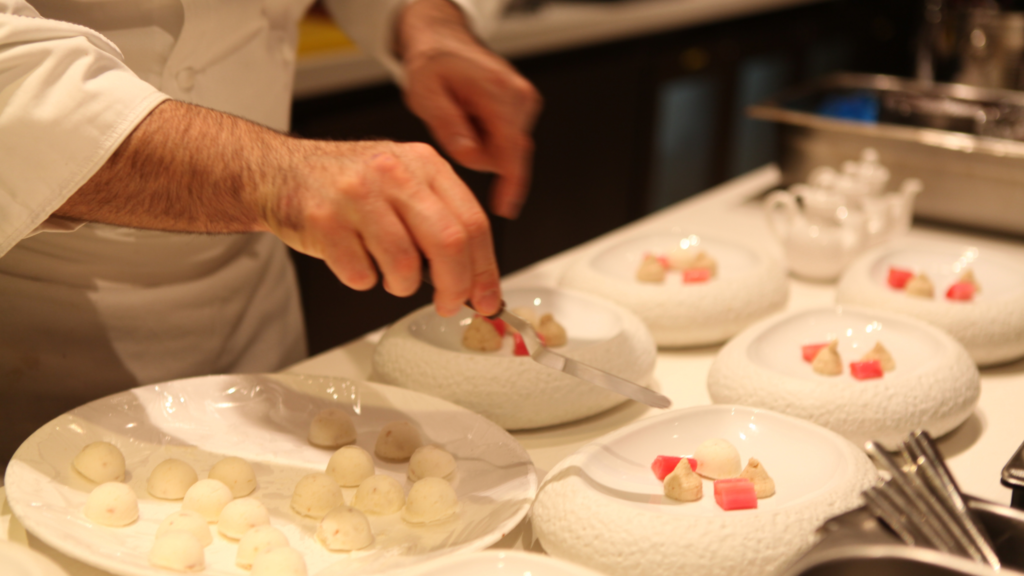Table of Contents
“Discover the Sweetness of Asian Pears – Unveil the True Nature!”
Asian pears, also known as nashi pears, are a unique and delicious fruit that has been enjoyed in Asia for centuries. They are a type of pear that is round and firm, with a crisp texture and sweet flavor. They are often eaten raw, but can also be cooked or used in salads and other dishes. While they are similar to other pears in many ways, Asian pears have their own unique characteristics that make them stand out. In this article, we will explore the true nature of Asian pears, from their history and nutritional benefits to how to select and store them.
Exploring the Nutritional Benefits of Asian Pears

If you’re looking for a delicious and nutritious snack, Asian pears are a great choice! These crunchy, juicy fruits are packed with vitamins and minerals that can help keep you healthy. Here’s a look at some of the nutritional benefits of Asian pears.
First of all, Asian pears are a great source of fiber. One medium-sized pear contains about 6 grams of fiber, which is about 25% of your daily recommended intake. Fiber helps keep your digestive system running smoothly and can help reduce your risk of heart disease and diabetes.
Asian pears are also a good source of vitamin C. One medium-sized pear contains about 10% of your daily recommended intake of vitamin C. Vitamin C is an important nutrient that helps boost your immune system and can help protect your cells from damage.
Asian pears are also a good source of potassium. One medium-sized pear contains about 5% of your daily recommended intake of potassium. Potassium helps regulate your blood pressure and can help reduce your risk of stroke and heart disease.
Finally, Asian pears are a good source of antioxidants. Antioxidants help protect your cells from damage and can help reduce your risk of certain diseases.
So, if you’re looking for a delicious and nutritious snack, Asian pears are a great choice! Not only are they tasty, but they’re also packed with vitamins and minerals that can help keep you healthy.
Uncovering the History and Origin of Asian Pears
Asian pears, also known as apple pears, sand pears, or nashi pears, are a type of fruit that has been enjoyed for centuries. Native to East Asia, these pears have a unique shape, texture, and flavor that sets them apart from other varieties.
The history of Asian pears dates back to ancient China, where they were first cultivated over 2,000 years ago. They were a popular snack among the Chinese aristocracy and were often given as gifts to royalty. Over time, the fruit spread to other parts of Asia, including Japan, Korea, and Vietnam.
Asian pears are known for their crisp texture and sweet flavor. They are rounder and firmer than other varieties of pears, and their skin is usually yellow or brown. The flesh of the fruit is white and juicy, and it has a mild, sweet taste.
Asian pears are a popular ingredient in many Asian dishes, such as salads, stir-fries, and desserts. They can also be eaten raw or cooked. The fruit is high in fiber and vitamins, making it a healthy snack.
Today, Asian pears are grown in many parts of the world, including the United States, Canada, and Europe. They are a popular choice for home gardeners, as they are easy to grow and require minimal care.
Asian pears are a delicious and nutritious fruit that have been enjoyed for centuries. Whether you eat them raw or cooked, they are sure to add a unique flavor to any dish.
Discovering the Different Varieties of Asian Pears
Asian pears, also known as apple pears, are a delicious and unique type of fruit. They have a crunchy texture and a sweet, juicy flavor that makes them a favorite among many fruit lovers. But did you know that there are actually several different varieties of Asian pears? Let’s take a look at some of the most popular types of Asian pears.
The first type of Asian pear is the Nashi pear. This variety is round and has a yellowish-green skin. It has a sweet, juicy flavor and a crunchy texture. The Nashi pear is a popular choice for salads and desserts.
The second type of Asian pear is the Hosui pear. This variety is round and has a yellowish-brown skin. It has a sweet, juicy flavor and a crunchy texture. The Hosui pear is a popular choice for baking and cooking.
The third type of Asian pear is the Shinko pear. This variety is round and has a yellowish-green skin. It has a sweet, juicy flavor and a crunchy texture. The Shinko pear is a popular choice for salads and desserts.
The fourth type of Asian pear is the Ya Li pear. This variety is round and has a yellowish-brown skin. It has a sweet, juicy flavor and a crunchy texture. The Ya Li pear is a popular choice for baking and cooking.
Finally, the fifth type of Asian pear is the Shinseiki pear. This variety is round and has a yellowish-green skin. It has a sweet, juicy flavor and a crunchy texture. The Shinseiki pear is a popular choice for salads and desserts.
So there you have it! Now you know the five most popular types of Asian pears. Whether you’re looking for a crunchy snack or a sweet treat, there’s an Asian pear variety that’s perfect for you. Enjoy!
Exploring the Different Ways to Enjoy Asian Pears
Asian pears are a delicious and versatile fruit that can be enjoyed in a variety of ways. Whether you’re looking for a snack, a side dish, or a dessert, there’s an Asian pear recipe for you! Here are some of the different ways to enjoy this tasty fruit.
1. Raw: Asian pears are delicious eaten raw. They have a sweet, juicy flavor and a crunchy texture. Slice them up and enjoy them as a snack or add them to salads for a refreshing crunch.
2. Baked: Baked Asian pears make a delicious and healthy dessert. Slice them in half, sprinkle with cinnamon and sugar, and bake until they’re soft and caramelized. Serve with a scoop of ice cream for a decadent treat.
3. Poached: Poaching Asian pears in a light syrup is a great way to bring out their natural sweetness. Serve them as a side dish or top with a dollop of whipped cream for a delicious dessert.
4. Pickled: Pickled Asian pears are a great way to add a tangy flavor to salads and sandwiches. They’re also a great addition to charcuterie boards.
5. Juiced: Asian pears make a delicious and refreshing juice. Blend them with other fruits and vegetables for a nutritious and flavorful drink.
No matter how you choose to enjoy Asian pears, you’re sure to love their sweet flavor and crunchy texture. So go ahead and give them a try!
Q&A
1. What is an Asian pear?
An Asian pear is a type of pear that is native to East Asia. It is round in shape and has a crisp texture and sweet flavor. It is also known as an apple pear or a nashi pear.
2. How do Asian pears differ from other types of pears?
Asian pears are rounder and firmer than other types of pears. They also have a sweet flavor and a crisp texture. They are also usually larger than other types of pears.
3. What are some of the health benefits of eating Asian pears?
Asian pears are a good source of dietary fiber, vitamins, and minerals. They are also low in calories and contain antioxidants that can help protect against disease. Eating Asian pears can also help to regulate blood sugar levels and improve digestion.
4. How should Asian pears be stored?
Asian pears should be stored in a cool, dry place. They can also be stored in the refrigerator for up to two weeks. It is best to eat them as soon as possible after purchase for the best flavor and texture.In conclusion, Asian pears are a unique and delicious fruit that have a wide range of health benefits. They are a great source of dietary fiber, vitamins, minerals, and antioxidants, making them a nutritious and tasty snack. They are also low in calories and can be enjoyed in a variety of ways. Asian pears are a great addition to any diet and can help to improve overall health.
![]()










